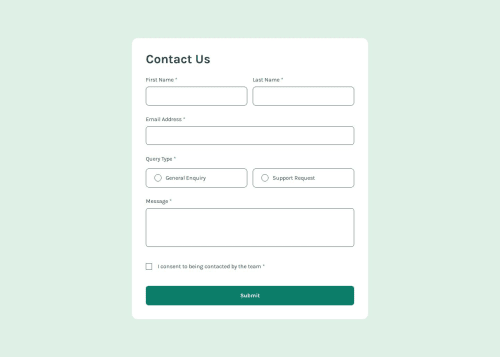Contact Form

Solution retrospective
I'm proud of the fact that I used TailwindCSS. for this project I've always been driving myself away from CSS frameworks. but I gotta say that by doing this project I can see why TailwindCSS is popular among Frontend devs. it makes styling way faster once you get used to the syntax and you don't have to think about how to structure styling as it just sits with you JSX. It's also very easy to customise.
I wouldn't do anything differently next time. I would in fact like to use TailwindCSS more in the next projects I do.
What challenges did you encounter, and how did you overcome them?Since this is my first time using TailwindCSS and NextJS I had to lookup a lot of stuff while working on the project. but that's just normal.
For tailwind I had to lookup the utility classes. and for NextJS I was first confused on what to make as a client component and what to use as a server component. At the end I just went with the rule that whenever I need a hook, browser API. I add the client directive.
What specific areas of your project would you like help with?I'd like to understand if the structure / code of my project is readable, understandable and follows best practices.
Thank you so much for viewing my solution.
Please log in to post a comment
Log in with GitHubCommunity feedback
No feedback yet. Be the first to give feedback on Abouelhouda Iliass's solution.
Join our Discord community
Join thousands of Frontend Mentor community members taking the challenges, sharing resources, helping each other, and chatting about all things front-end!
Join our Discord